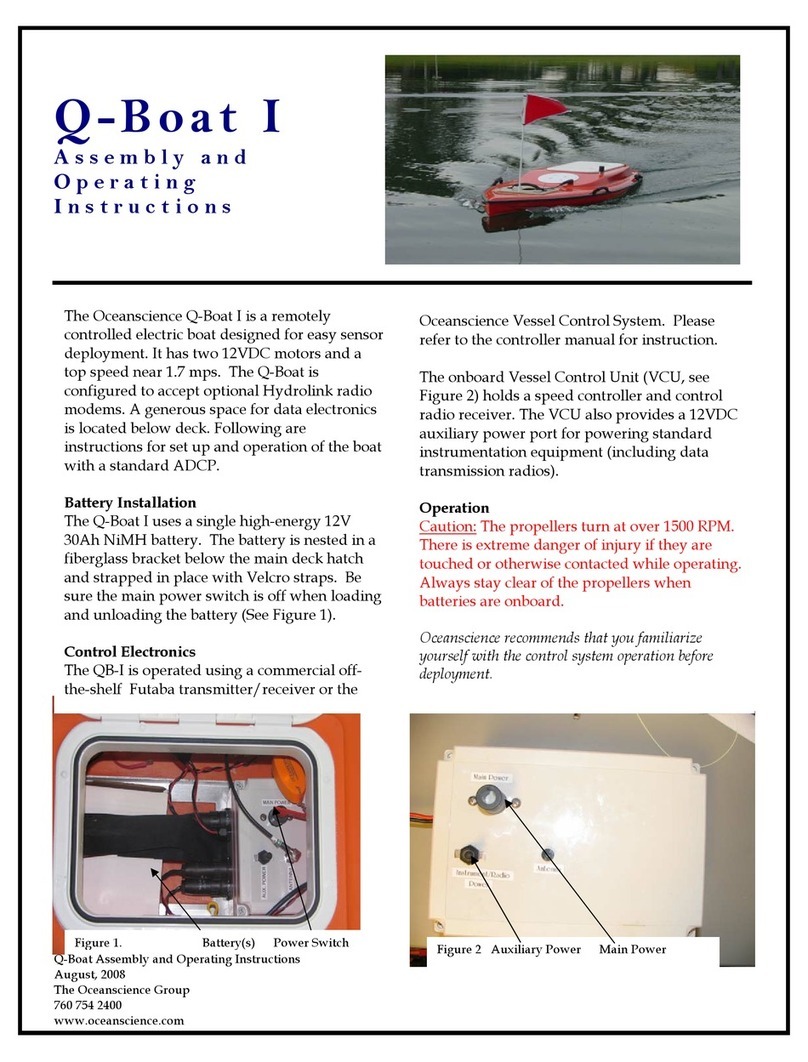
Q-Boat 1800 Page 4 8/26/2011
1.0 Introduction
Congratulations on your recent purchase of the Oceanscience Q-Boat 1800.
The Oceanscience Q-Boat 1800 is a remotely-operated electric boat designed to make safe, unmanned
measurements of currents, bathymetry, and discharge with ADCPs. It can be customized with an
Oceanscience Oyster PE onboard computer, GPS, depth sounder and a variety of other instruments.
The rugged, lightweight hull is constructed of high-impact UV-resistant ABS. The boat’s powerful
outdrives are capable of reaching speeds up to 5 m/s and the efficient V-bottom design produces smooth,
predictable, agile handling even in choppy waters. The large watertight electronics compartment is
spacious and easily accessible. Two people can easily handle the boat and it can be transported in a
pickup, and SUV or some cars.
There are two models of Q-Boat 1800: the 1800D (displacement) and the 1800P (planning). The Q-Boat
1800D operates in displacement mode with a single 200W outdrive and a 12V NiMH battery pack,
producing a top speed of around 1.5 m/s (5 f/s). The Q-Boat 1800P operates in planning mode with twin
750W outdrives and three 24V NiMH battery packs. With the stock propellers, top speed is 4.5 m/s (15
f/s).
2.0 Safety and Cautions
Safety is a major concern when working around moving propellers. Extreme caution must be observed
when working on or around the Q-Boat. The propellers can rotate at more than 3,000 RPM and produce
750 W (1.0 HP) each. There is extreme danger of injury if the propellers are touched while operating.
Always stay clear of the propellers when the batteries are onboard.
When powering up the Q-Boat, always turn the radio transmitter on before powering the boat itself. If,
when powered up, the receiver on the boat does not detect a controller signal, the Vessel Control Unit
may unexpectedly enter the fail safe mode. This could be extremely dangerous, depending on the failsafe
setting. Though customizable in the field, the Q-Boat’s default failsafe behavior is to travel in a wide circle
until RC contact is reestablished.
Conversely, when shutting down always power down the boat (using the red battery switch) before
shutting down the transmitter. Again, if the transmitter is shut off before the boat, unexpected and
possibly very dangerous maneuvers will likely occur.
Properly installed instruments can cause the boat to fill with water. Never try to operate the Q-Boat 1800
without properly installed instruments.




























